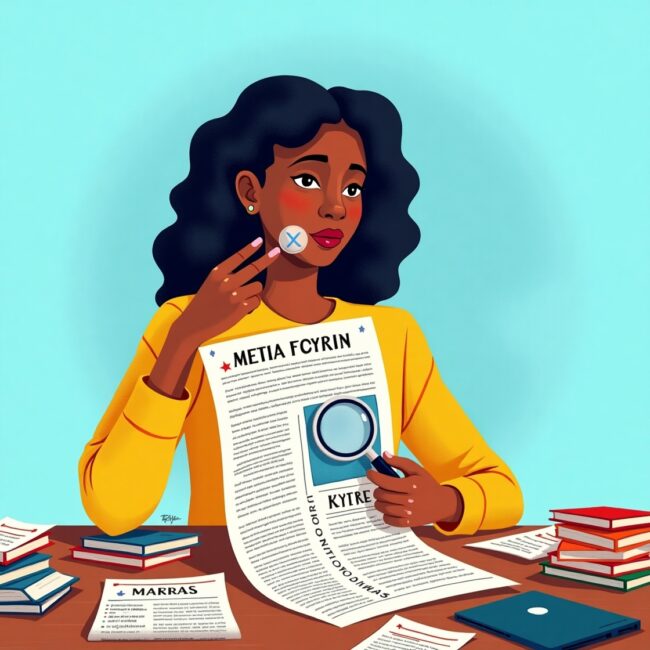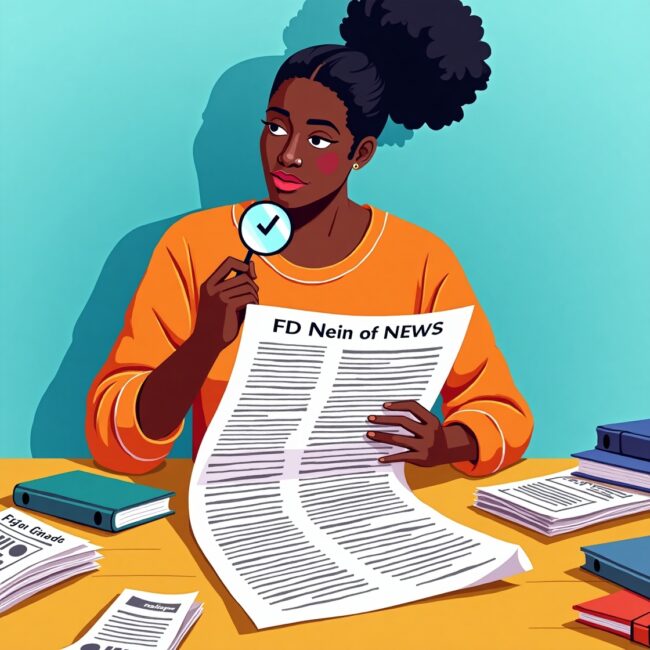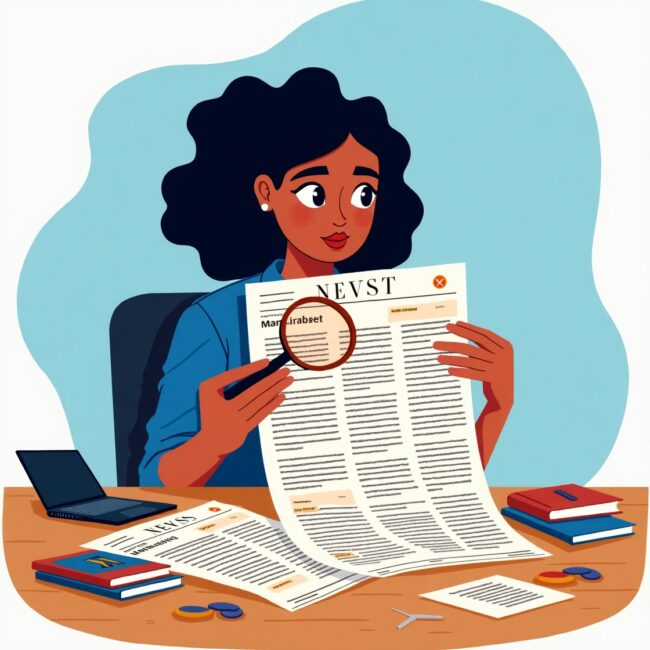You know that feeling when your uncle shares a news article in the family group chat and your stomach drops because you're 99% sure it's complete

You know that feeling when your uncle shares a news article in the family group chat and your stomach drops because you’re 99% sure it’s completely fake?
We’ve all been there. And with 68% of Americans saying they regularly encounter made-up news, spotting fact from fiction has become a survival skill for navigating the internet.
This guide will give you practical tools to tell if a news story is true or false within seconds, not hours. No fancy degrees required.

But before we jump into the detective work, let’s address the elephant in the room: why are we so bad at spotting fake news in the first place? The answer might make you question everything you’ve ever shared online.
Understand the Source: Who’s Telling You the News
A. Identifying reputable news outlets vs. questionable sources
Not all news sources are created equal. The big players like The New York Times, BBC, and Reuters have built their reputations over decades. They employ fact-checkers, follow journalism ethics codes, and issue corrections when they mess up.
Want to spot a sketchy source? Look for these red flags:

- Weird domain names (like ABCnews.com.co)
- Excessive pop-ups and clickbait headlines
- No “About Us” page or contact information
- Stories that aren’t covered anywhere else
Think of news outlets like restaurants. The established ones with health ratings displayed are probably safer bets than the roadside stand with no permits.
B. Researching the author’s credentials and background

Who wrote that explosive headline you just read? A seasoned journalist with 20 years covering that beat, or someone who created their Twitter account last week?
When you spot an article, take 30 seconds to:
- Google the author’s name
- Check their bio on the publication’s website
- Look at their previous work
- See if they have relevant experience or education
A political analysis from a veteran White House correspondent carries more weight than one from someone whose main qualification is “passionate citizen.”
C. Checking for website ownership and funding transparency

Follow the money! Knowing who bankrolls a news outlet tells you volumes about potential biases.
Good news sources openly share:
- Who owns them
- Their funding model
- Their advertising policies
- Any major investors
This info should be easy to find in the “About” section. If a site hides who’s paying the bills, that’s suspicious.
For example, if you discover a “health news” site is actually funded by a supplement company, their glowing review of a new supplement might make more sense.
D. Recognizing potential political or ideological biases

Every news source has some bias. The trick isn’t finding a perfectly neutral one (they don’t exist) but understanding where they lean.
Media bias charts can help. They map outlets from left to right and by reliability.
Some bias clues to watch for:
- Loaded language (“slammed,” “destroyed” in debates)
- Opinion mixed with news without clear labeling
- Cherry-picked facts
- Stories that trigger strong emotional reactions
A smart news consumer reads across the spectrum, getting conservative, liberal, and centrist takes on important stories.
E. Evaluating the source’s track record for accuracy

Past performance predicts future results. Check if a source has:
- Won journalism awards
- Been cited by other reputable outlets
- Had to issue frequent corrections
- Been caught publishing false information
Sites like Media Bias/Fact Check and NewsGuard rate news sources on accuracy and transparency.
If a source has repeatedly shared debunked stories without corrections, treat everything they publish with extreme caution. Even one-time reliable sources can slip – The New York Times still lives with their flawed Iraq War coverage, showing nobody’s perfect.
Detecting clickbait and emotionally manipulative language
Headlines screaming “You Won’t BELIEVE What Happened Next!” or “SHOCKING Truth Finally Revealed!” aren’t just annoying – they’re red flags. News outlets desperate for clicks often use this emotional bait to hook you.
Watch for excessive capitalization, multiple exclamation points, and loaded words designed to trigger strong emotions like outrage, fear, or amazement. Real journalism rarely needs to SHOUT at you or promise mind-blowing revelations.
Notice how legitimate headlines summarize the actual story rather than teasing you with vague promises. They inform rather than manipulate. If a headline makes you feel intensely emotional before you’ve even read the article, take a step back and ask yourself why they’re working so hard to provoke that reaction.
Recognizing when claims seem too extraordinary to be true

The old saying holds up: if it sounds too good (or too terrible) to be true, it probably is. Extraordinary claims require extraordinary evidence.
When you see headlines about miracle cures, massive conspiracies, or paradigm-shifting discoveries, your skepticism should kick into high gear. Real scientific breakthroughs and major news developments typically come with substantial evidence and get reported by multiple credible sources.
Ask yourself: Would this development really be getting such limited coverage if it were legitimate? Why isn’t every major news outlet covering this “bombshell” revelation? Stories promising simple solutions to complex problems or secret knowledge that “they” don’t want you to know about are classic misinformation tactics.
Identifying misleading statistics and decontextualized facts

Numbers can lie when taken out of context. Watch for these statistical tricks:
- Cherry-picking: Selecting only the data points that support a predetermined conclusion
- Missing baselines: Presenting increases or decreases without the starting point
- Correlation presented as causation: Just because two things happen together doesn’t mean one caused the other
- Misleading graphs: Visual tricks like chopped-off y-axes that make small differences look dramatic
Context matters enormously. A statistic showing a “300% increase” might sound alarming until you learn it went from 1 case to 4 cases in a population of millions.
Looking for missing information or one-sided reporting
Good journalism presents multiple perspectives and addresses obvious questions. When articles present only one side of a controversial issue, that’s a warning sign.
Check if the article:
- Quotes sources from only one perspective
- Fails to include critical context that would change interpretation
- Ignores obvious counterarguments
- Uses anonymous sources without explaining why anonymity is necessary
Watch for what’s conspicuously missing. Does the article mention a shocking claim but not what experts in the field say about it? Does it describe a problem without mentioning attempted solutions? These omissions are often deliberate attempts to control your perception of the issue.
In today’s fast-paced digital world, knowing how to tell if a news story is true or false is essential to avoid falling for misinformation. By checking the source, verifying facts, and using trusted fact-checking tools, you can confidently navigate the news landscape. Staying informed means staying critical—so always take a moment to assess before you share.




COMMENTS